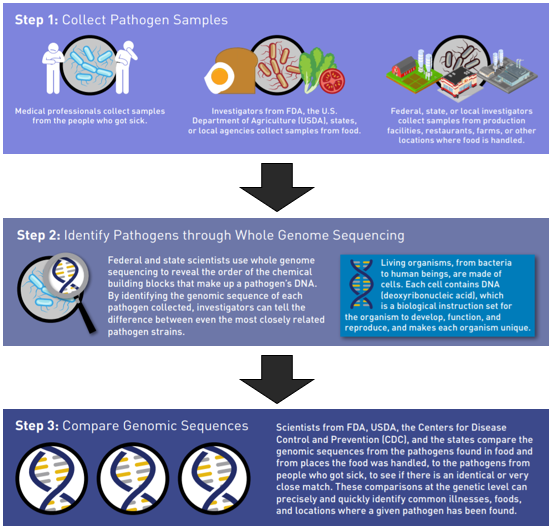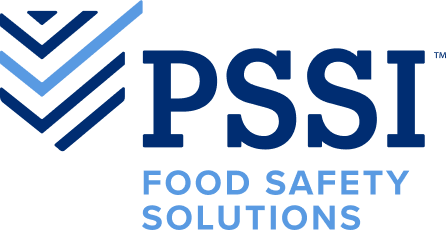Next-generation sequencing (NGS) and whole-genome sequencing (WGS) might sound like ‘sciencey’ buzzwords, but they are revolutionizing food safety and public health. NGS and WGS techniques are being used for food pathogen detection, food authenticity testing, tracing the source of disease outbreaks, and more.
Next-generation sequencing is a broad term that includes several methods to sequence DNA. All organisms have DNA. It is a molecule that carries the genetic instructions of life, like an extremely detailed user manual. When you sequence DNA, you are determining the order of individual DNA building blocks. These building blocks are called bases, and bases make up genes, and the collection of genes make up the genome.

One method of DNA sequencing is called whole-genome sequencing. Just like the name implies, WGS determines the DNA sequence of the entire genome, which for bacteria is millions of bases. By knowing the order of bases, scientists can identify bacteria down to strain-level. This is an important tool for disease detectives looking to solve foodborne outbreak investigations.
During a foodborne outbreak, investigators are trying to figure out the food item and where it was produced that led to people getting sick. To find the ‘smoking gun’, scientists can use WGS to help match a pathogen found in a food, or found at a food handling location, to the suspect pathogen that made the person ill. Investigators perform WGS on these clinical, food, and environmental samples. The sequences from all samples are analyzed and compared to find any matches. Resulting WGS matches between samples is evidence that the food or food handling location was the source of the foodborne illness outbreak.

Besides outbreak investigations, WGS can be utilized in many other applications. Even though WGS has a wide scope of uses, there are some barriers that limit the adaption of WGS by the food industry. Some of those barriers include equipment and supply cost, the complexity of analysis, ambiguity of data ownership, and uncertainty around legal and regulatory implications.
As with any new technology, learning is the first step to understanding. While the food industry may not be fully ready for conversion to or implementation of WGS as a pathogen identification tool, it is beneficial for food professionals to understand sequencing technology and its potential uses so we can continue to, collectively, move the needle towards safer food.
